Previous Day - Next Day
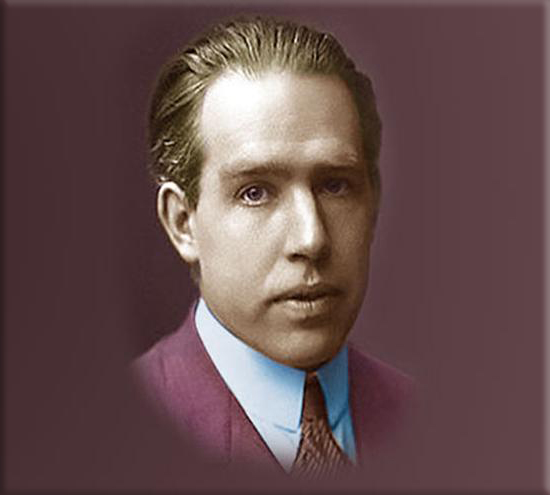
“The opposite of a correct statement is a false statement. But the opposite of a profound truth may well be another profound truth.”
~ Niels Bohr
Wikiquote (Niels Bohr (October 7, 1885 – November 18, 1962) was a Danish physicist who made foundational contributions to understanding atomic structure and quantum mechanics, for which he received the Nobel Prize in Physics in 1922. Bohr was also a philosopher and a promoter of research in science.)

October 7th, 3761 BC
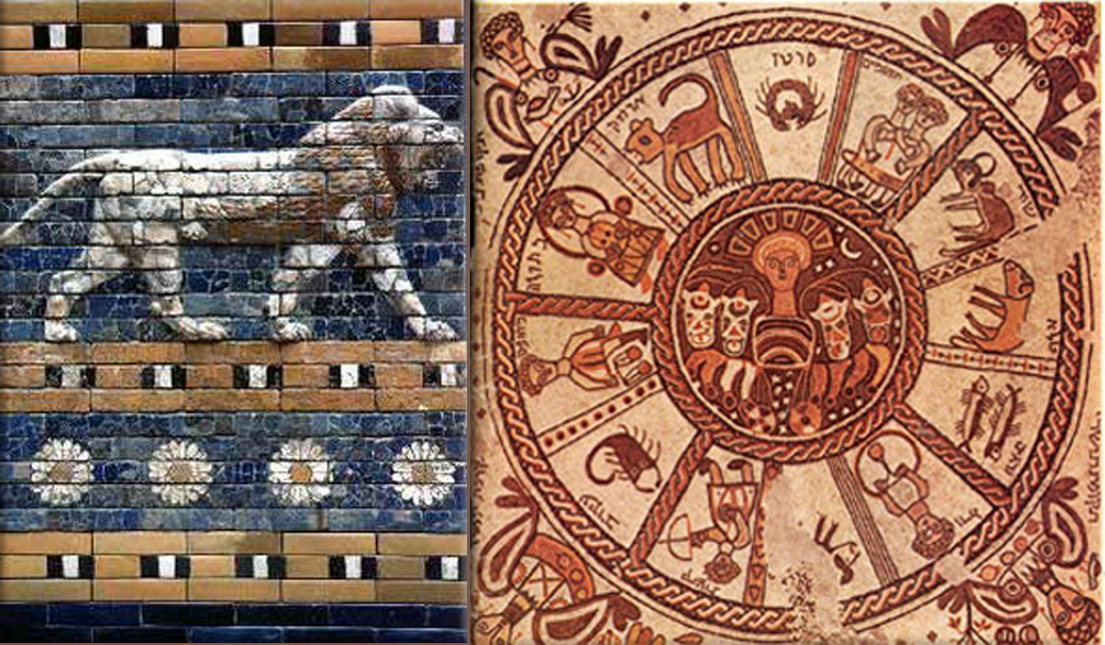
3761 BC - The epoch reference date epoch (origin) of the modern Hebrew calendar (Proleptic Julian calendar).
1582 - Because of the implementation on October 4th 1582 by Pope Gregory XIII of the Gregorian Calendar, this day is skipped. In Italy, Poland, Portugal, and Spain, October 4 of this year is followed directly by October 15.
Wikipedia Image: Hebrew calendar; Detail of the Ishtar Gate of Babylon, dating from the era of the Babylonian captivity; Mosaic pavement of a zodiac in the 6th century synagogue at Beit Alpha, Israel.
October 7th, 1542
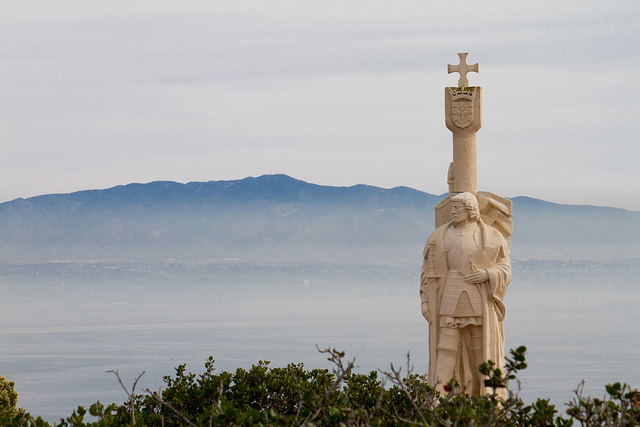
Explorer Juan Rodríguez Cabrillo discovers Santa Catalina Island off the California coast.
Wikipedia Photo: Portuguese explorer Juan Rodriguez Cabrillo, sailing for Spain, discovered Catalina Island off the coast of California and claimed it for Spain. credit High Rock Photo.
October 7th, 1571
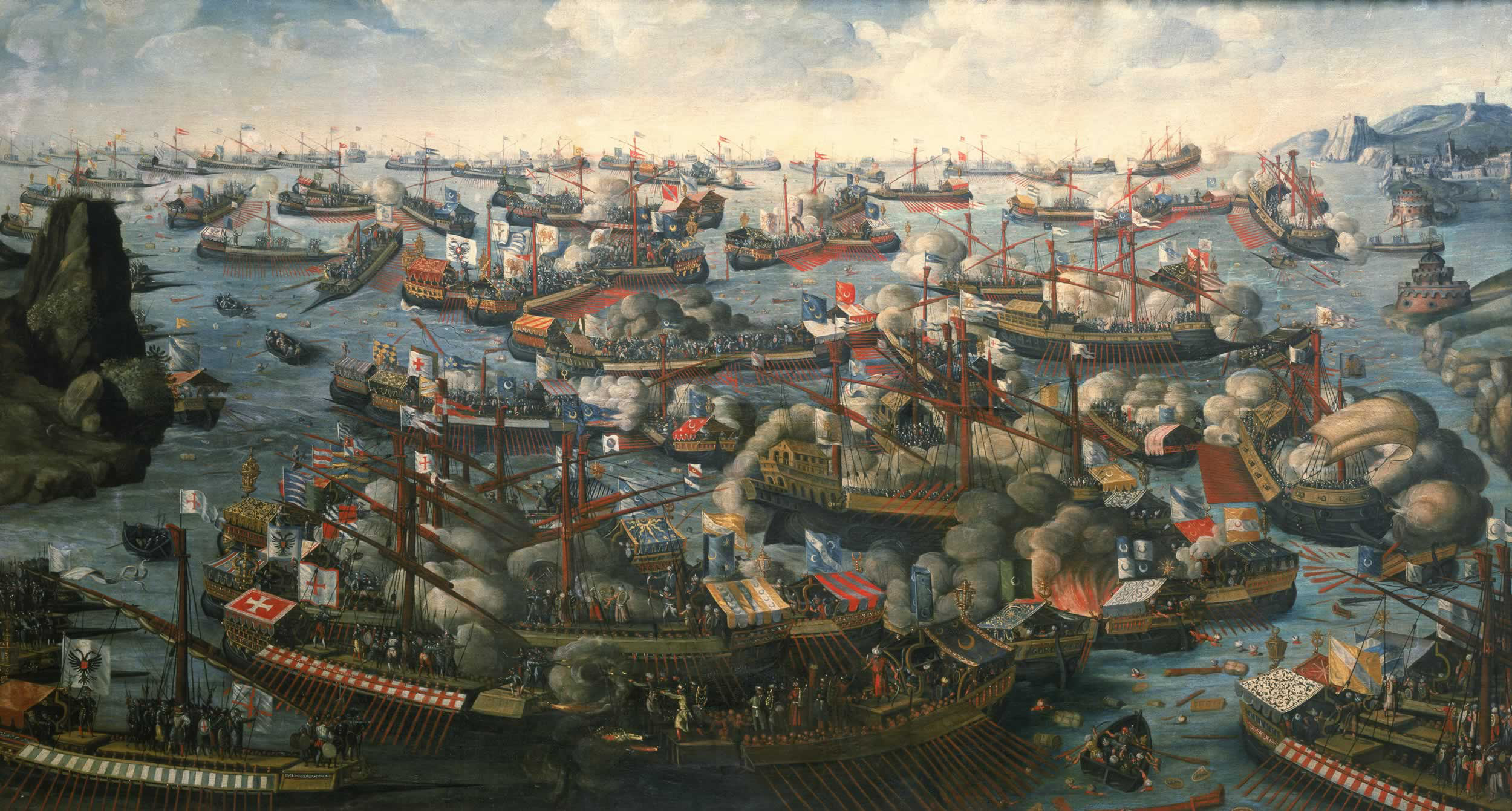
Battle of Lepanto: is fought, and the Holy League (Spain and Italy) destroys the Turkish fleet Holy League (Spain and Italy) destroys the Turkish fleet.
Wikipedia Photo: Ottoman-Habsburg wars; Fourth Ottoman-Venetian War - The Battle of Lepanto, by H. Letter, National Maritime Museum, Greenwich / London
October 7th, 1691
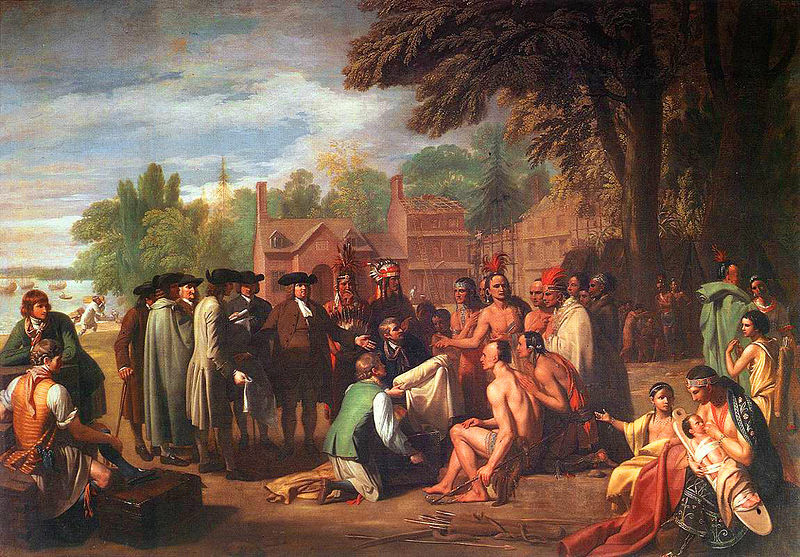
American Colonies:
1691 - The English royal charter for the Province of Massachusetts Bay is issued.
1763 - George III of Great Britain issues British Royal Proclamation of 1763, closing aboriginal lands in North America north and west of Alleghenies to white settlements.
Wikipedia Painting: The Treaty of Penn with the Indians, by Benjamin West. Pennsylvania Academy of Fine Arts, Philadelphia
October 7th, 1777
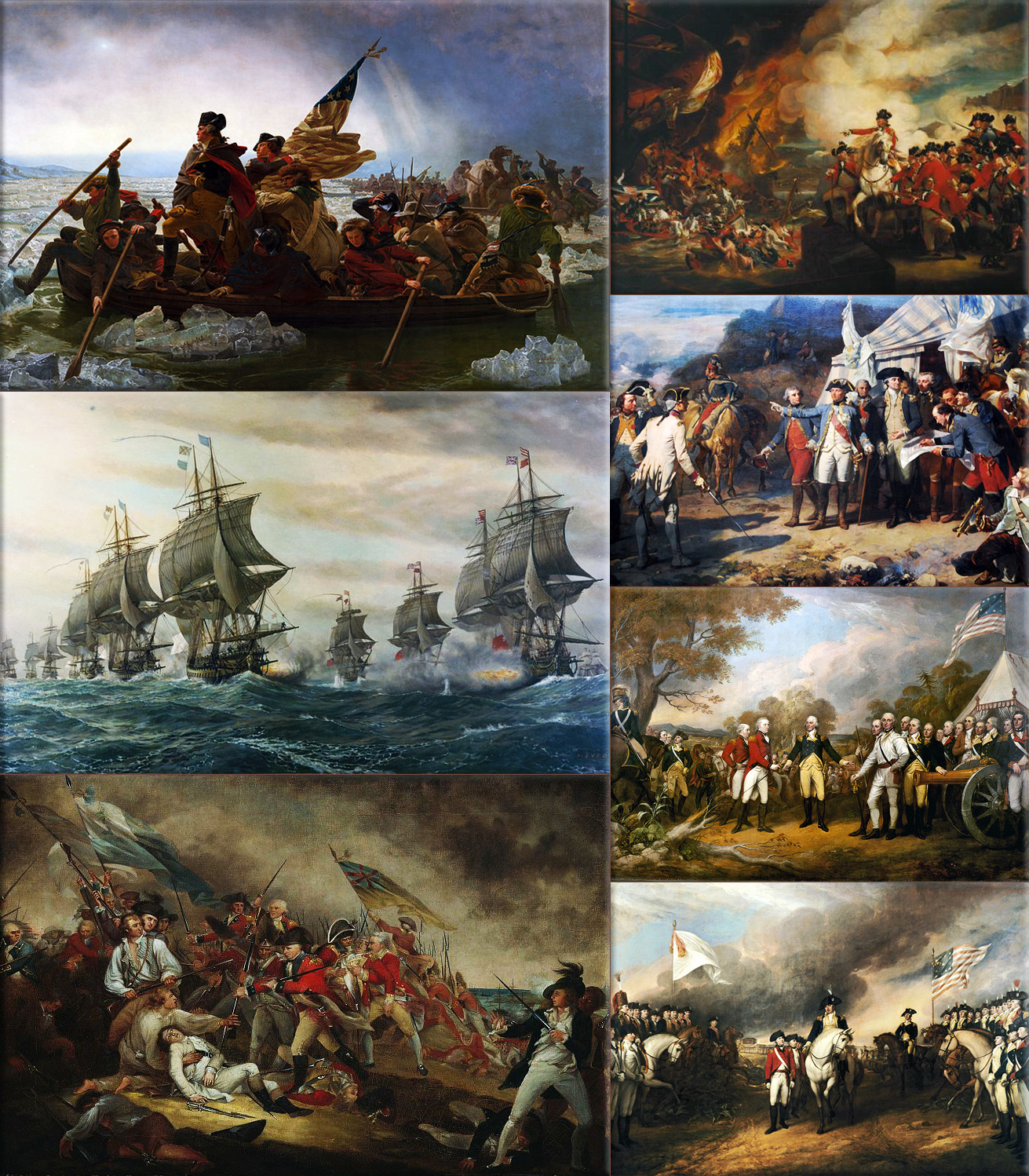
American Revolutionary War:
1777 - Battle of Bemis Heights (Battles of Saratoga); the Americans defeat the British.
1780 - Battle of Kings Mountain; American Patriot militia defeat Loyalist irregulars led by British colonel Patrick Ferguson in South Carolina.
Wikipedia Paintings: Washington Crossing the Delaware, by Emanuel Leutz; Battle of the Chesapeake, French (left) and British (right) lines; Battle of Bunker Hill, The Death of General Warren at the Battle of Bunker Hill by John Trumbull; The Defeat of the Floating Batteries at Gibraltar, September 13, 1782, by John Singleton Copley; Washington and the Comte de Rochambeau at Yorktown, 1781; "The surrender at Saratoga" shows General Daniel Morgan in front of a French de Vallière 4-pounder; Surrender of Cornwallis at Yorktown by (John Trumbull, 1797).
October 7th, 1800


French Revolutionary Wars / Napoleonic Wars:
1800 - French corsairs Robert Surcouf, commander of the 18-gun ship La Confiance, captures the British 38-gun Kent inspiring the traditional French song Le Trente-et-un du mois d'août.
Wikipedia Painting: Battle of Trafalgar: The British HMS Sandwich fires to the French flagship Bucentaure (completely dismasted) in the battle of Trafalgar;
Napoleon in Berlin (Meynier). After defeating Prussian forces at Jena, the French Army entered Berlin on 27 October 1806;
Battle of the Bridge of Arcole Napoleon Bonaparte leading his troops over the bridge of Arcole, by Horace Vernet;
Napoleon as King of Italy (Appiani);
Napoleon Crossing the Alps (David). In 1800 Bonaparte took the French Army across the Alps, eventually defeating the Austrians at Marengo;
Charge of the Russian Imperial Guard cavalry against French cuirassiers at the Battle of Friedland, 14 June 1807;
Battle of Borodino as depicted by Louis Lejeune. The battle was the largest and bloodiest single-day action of the Napoleonic Wars;
Napoleon's withdrawal from Russia, a painting by Adolph Northen;
Wellington at Waterloo by Robert Alexander Hillingford;
Napoleon is often represented in his green colonel uniform of the Chasseur à Cheval, with a large bicorne and a hand-in-waistcoat gesture.
French corsairs, Capture of the Kent by the Confiance, by Ambroise Louis Garneray.
October 7th, 1864
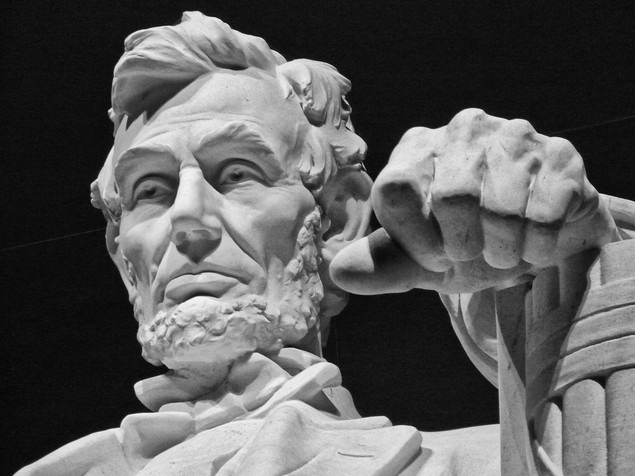
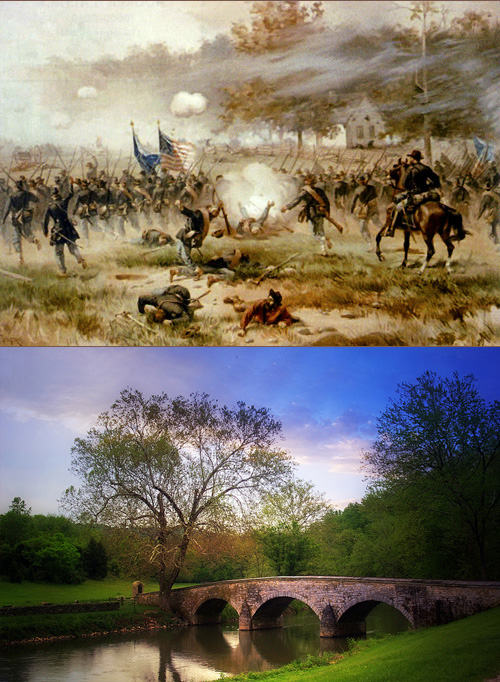
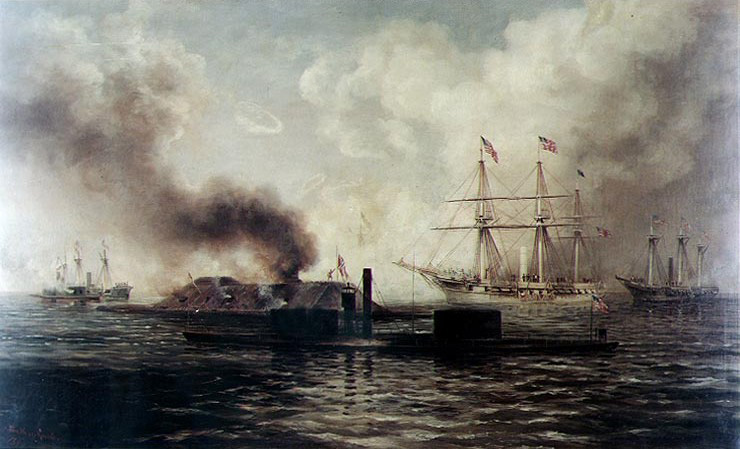
American Civil War:
1864 - Bahia Incident; USS Wachusett illegally captures the CSS Florida Confederate raider while in port in Bahia, Brazil in violation of Brazilian neutrality.
Wikipedia Image: ● Lincoln Memorial; an American national monument built to honor the 16th President of the United States, Abraham Lincoln - located on the National Mall in Washington, D.C. across from the Washington Monument.
● The northern army led by George McClellan and the southern army led by Robert E. Lee met at Antietam Creek, Maryland in September, 1862. It was a bloody battle where 13,000 Confederates and 12,000 Union troops died in just one day. McClellan had hesitated to attack before the battle thus letting the southern troops regroup. Also, he had saved reserves and refused to use them at the end of the battle thinking that Lee was holding reserves for a counterattack, even though those reserves didn't exist. The Union victory stopped Lee's northward advance and was a turning point in the war.
● Battle of Antietam / Stone Bridge at Antietam Battlefield - Sharpsburg, Maryland
● Battle of Mobile Bay (1890) by Xanthus Russell Smith.
● Although photography was still in its infancy, war correspondents produced thousands of images, bringing the harsh realities of the frontlines to those on the home front in a new and visceral way. The Atlantic.
October 7th, 1916
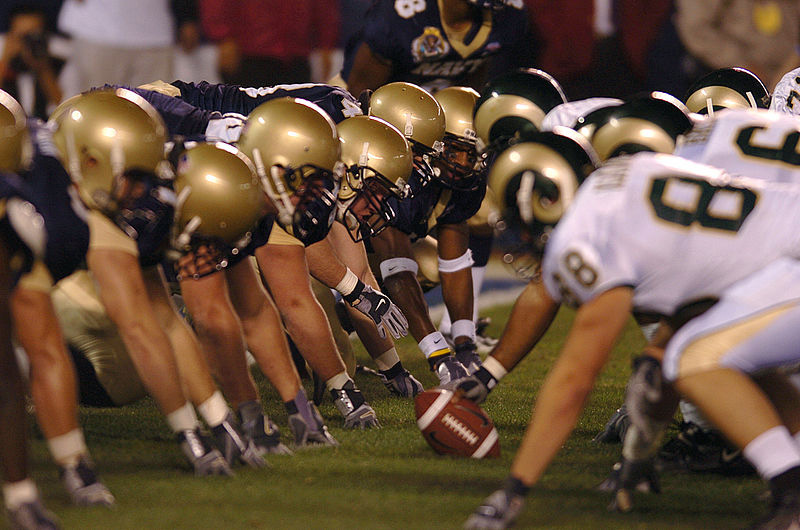
American football: 1916 Cumberland vs. Georgia Tech football game; Georgia Tech defeats Cumberland University 222-0, in the most lopsided college football game in American history.
Wikipedia Image: The U.S. Naval Academy Midshipmen (left) face off against the Colorado State Rams.
October 7th, 1940
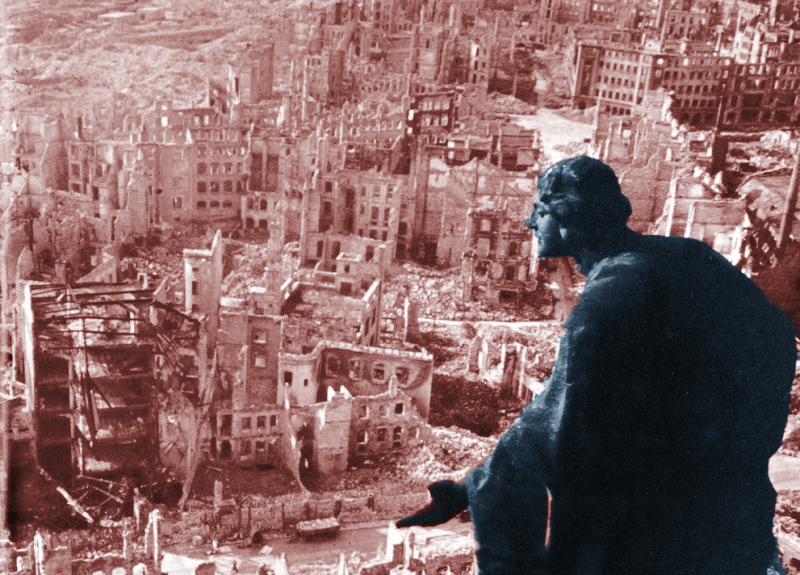

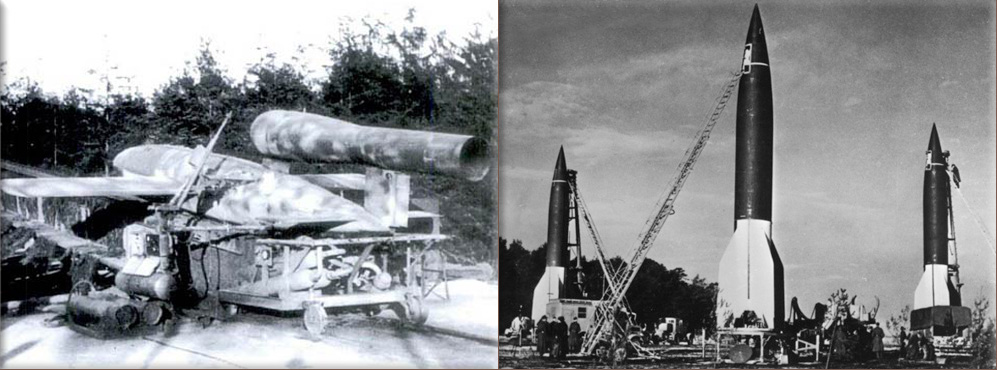
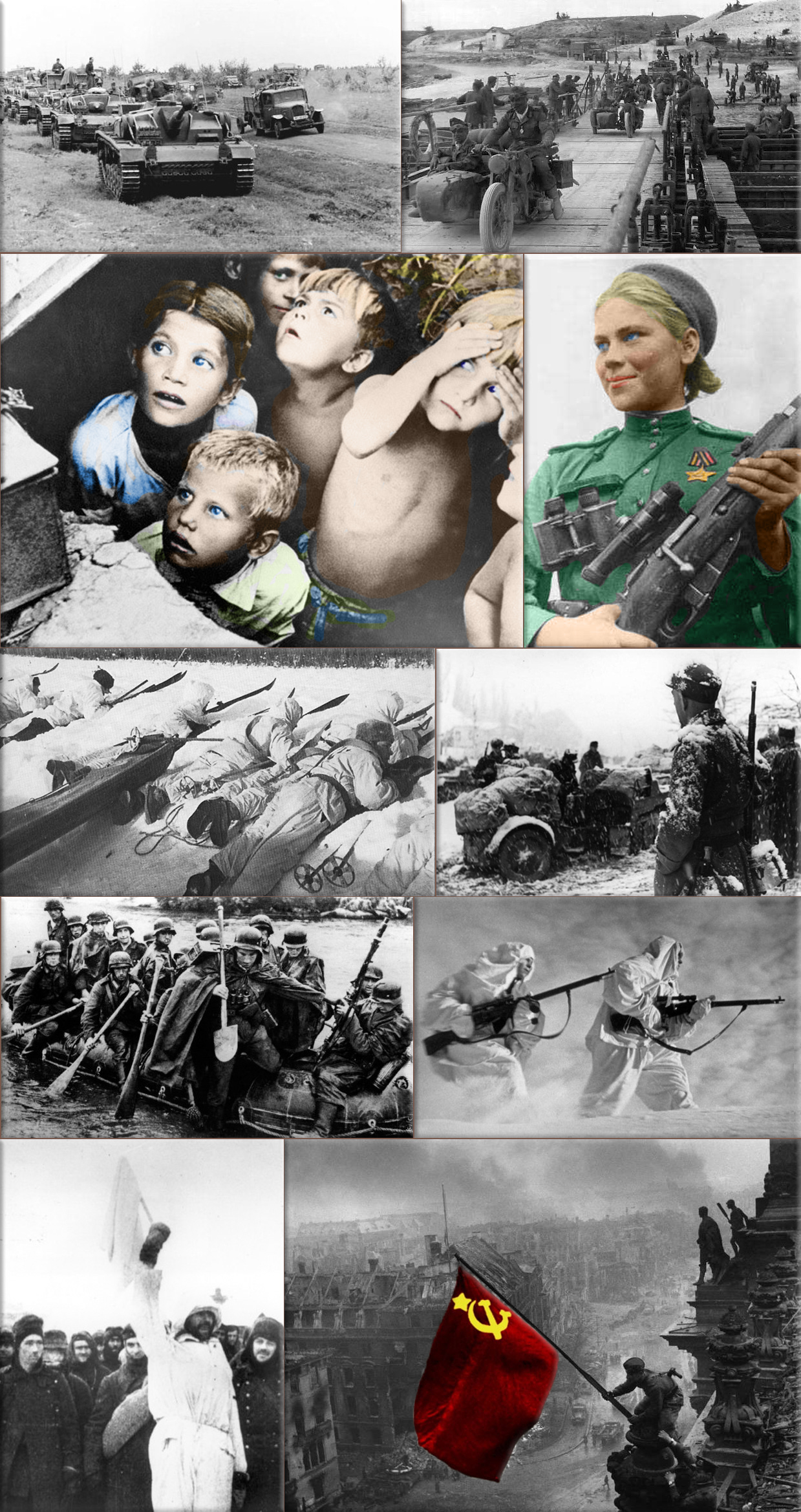
1940 - McCollum memo proposes bringing the United States into the war in Europe by provoking the Japanese to attack the United States.
1942 - The October Matanikau action on Guadalcanal begins as United States Marine Corps forces attack Imperial Japanese Army units along the Matanikau River.
Wikipedia Photo: Bombing of Dresden in World War II; August Schreitmüller's sculpture 'Goodness' surveys Dresden after a firestorm started by Allied bombers in 1945.
USS Bunker Hill was hit by kamikazes piloted by Ensign Kiyoshi Ogawa and another airman on 11 May 1945. 389 personnel were killed or missing from a crew of 2,600; Ensign Kiyoshi Ogawa, who flew his aircraft into the USS Bunker Hill during a Kamikaze mission on 11 May 1945; Kamikaze Missions - Lt Yoshinori Yamaguchi's Yokosuka D4Y3 (Type 33 Suisei) "Judy" in a suicide dive against USS Essex. The dive brakes are extended and the non-self-sealing port wing tank is trailing fuel vapor and/or smoke 25 November 1944.
German V1 flying-bomb and V2 Rockets - Preparations for a Salvo Launch of V-2 Rockets in the Heidelager near Blizna (Poland) (1944), credit German History in Documents and Images GHDI.
Eastern Front (World War II); Germans race towards Stalingrad. August 1942; Soviet children during a German air raid in the first days of the war, June 1941, by RIA Novosti archive; Soviet sniper Roza Shanina in 1944. About 400,000 Soviet women served in front-line duty units Caucasus Mountains, winter 1942/43; Finnish ski patrol: the invisible enemy of the Soviet Army with an unlimited supply of skis; Men of the German Engineers Corps cross a river which is swollen after the first autumn rains, to strengthen bridges linking the German positions on the central front in Russia. by Keystone / Getty Images. October 1942; Russian snipers fighting on the Leningrad front during a blizzard. Photo by Hulton Archive / Getty Images, 1943; German soldiers surrendering to the Russians in Stalingrad, the soldier holding the white flag of surrender is dressed in white so that there could be no doubt of his intentions, a Russian soldier is on the right of the photograph. by Keystone / Getty Images, January 1943.
October 7th, 1944
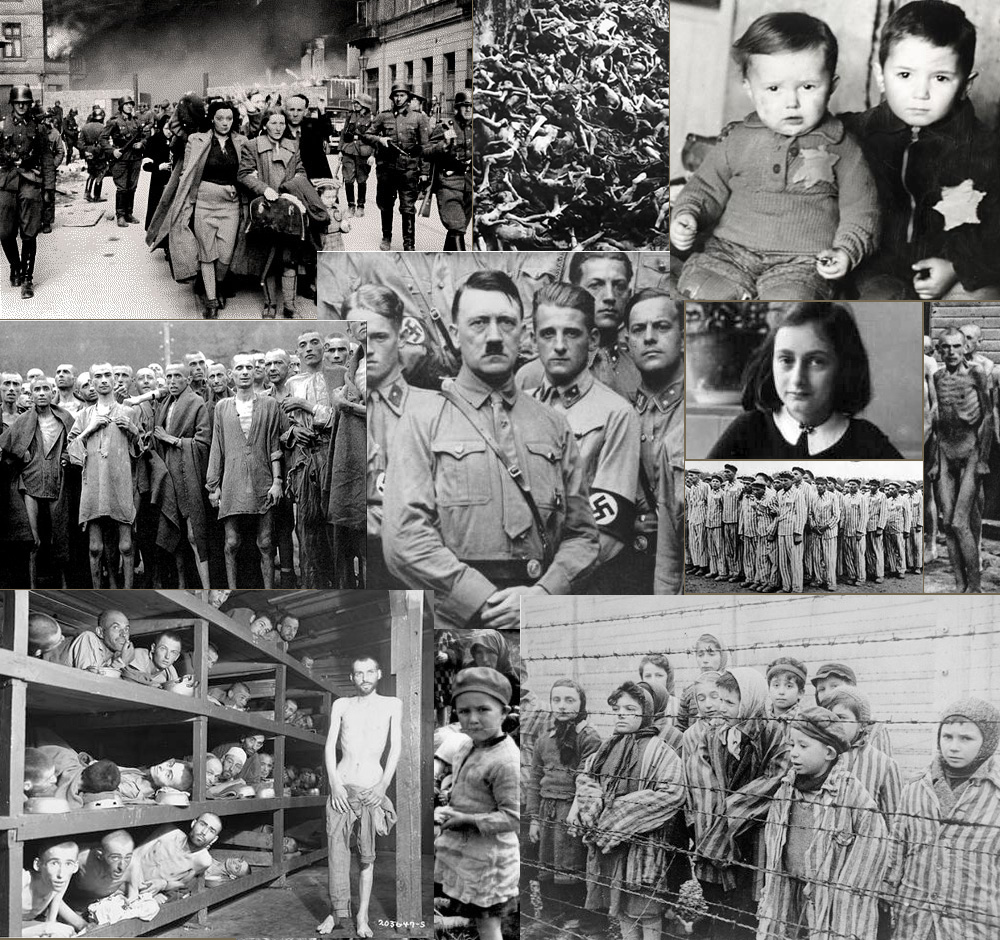
World War II: Holocaust;
1944 - Uprising at Birkenau concentration camp (Auschwitz), Jewish prisoners burn down the crematoria.
Wikipedia Photo: World War II, The Holocaust. Sources: United States Holocaust Memorial Museum USHMM, History 1900s, Internet Masters of Education Technology IMET, Techno Friends, Veterans Today, Concern.
October 7th, 1949

German Democratic Republic (East Germany) is formed.
Wikipedia The Berlin Wall was a barrier constructed by the German Democratic Republic (GDR, East Germany) starting on 13 August 1961, that completely cut off West Berlin from surrounding East Germany and from East Berlin
October 7th, 1955

American poet Allen Ginsberg performs his poem Howl for the first time at the Six Gallery in San Francisco.
Wikipedia Photo: American poet Allen Ginsberg.
October 7th, 1959
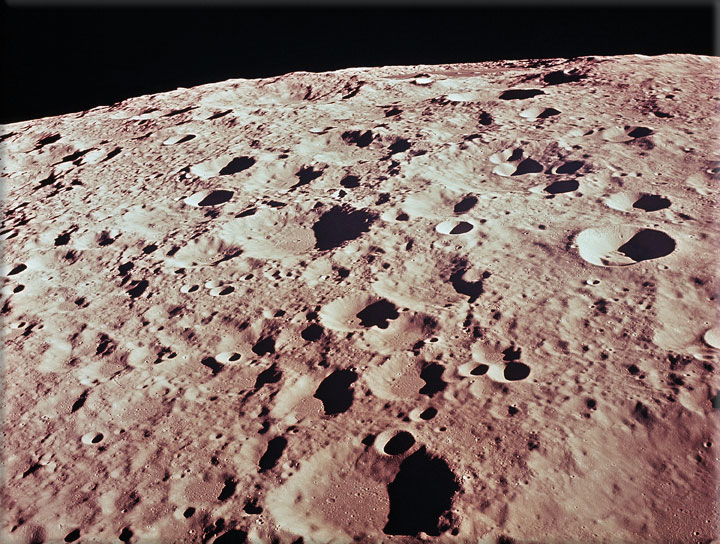
Soviet Union probe Luna 3 transmits the first ever photographs of the far side of the Moon.
Wikipedia Photo: The far side of the Moon, photographed during the Apollo 11 mission, 1969. NASA.
October 7th, 1985
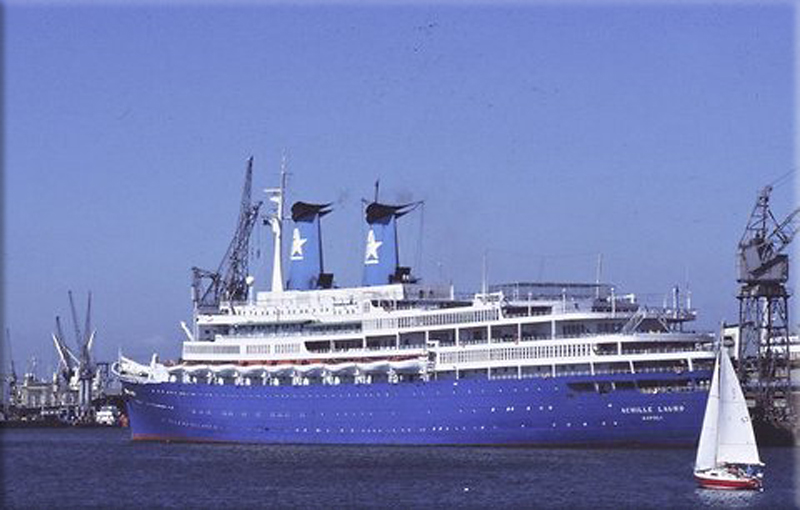
Palestinian gunmen hijack the Italian cruise ship MS Achille Lauro off the coast of Egypt in the Mediterranean.
Wikipedia Photo: Italian cruise ship MS Achille Lauro, shown here around 1989, returned to service following the hijacking. On Dec. 2, 1994, it caught fire and sank off the coast of Somalia, killing two and injuring eight passengers. credit New York Times, D. R. Walker.
October 7th, 2001
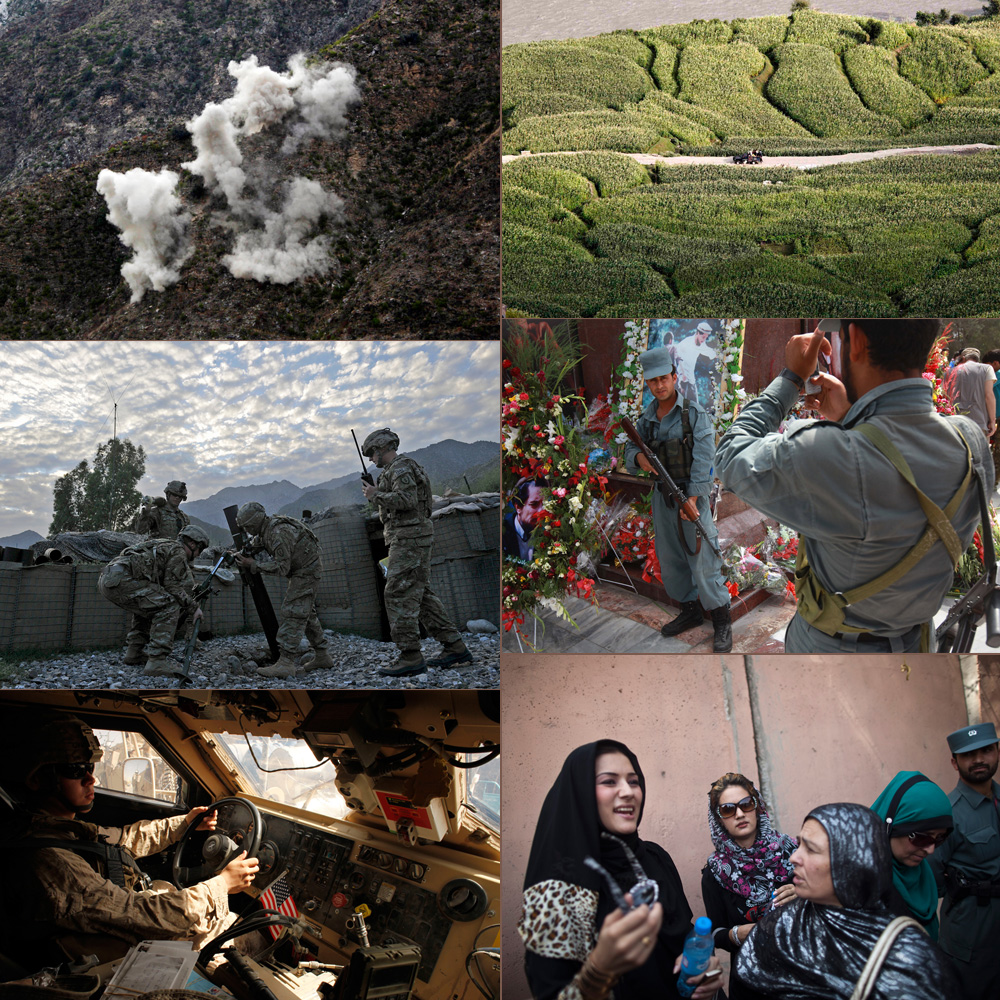
War in Afghanistan:
2001 - Global War on Terrorism begins as a result of the September 11 attacks. The U.S. invasion of Afghanistan initiates with an air assault and covert operations on the ground.
Wikipedia Photo: Afghanistan, Boston Globe, The Big Picture.
